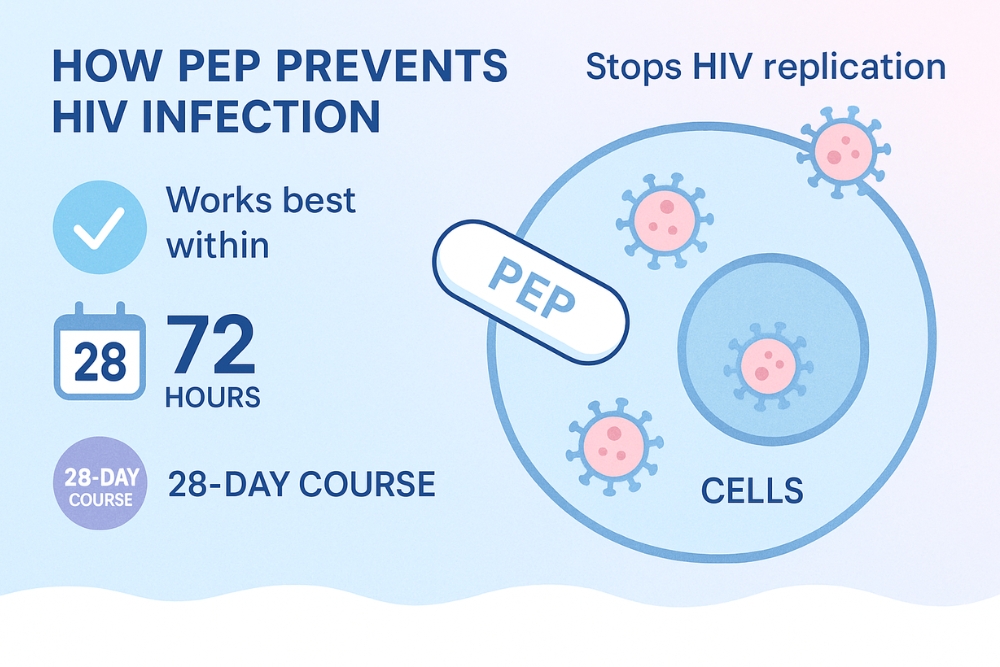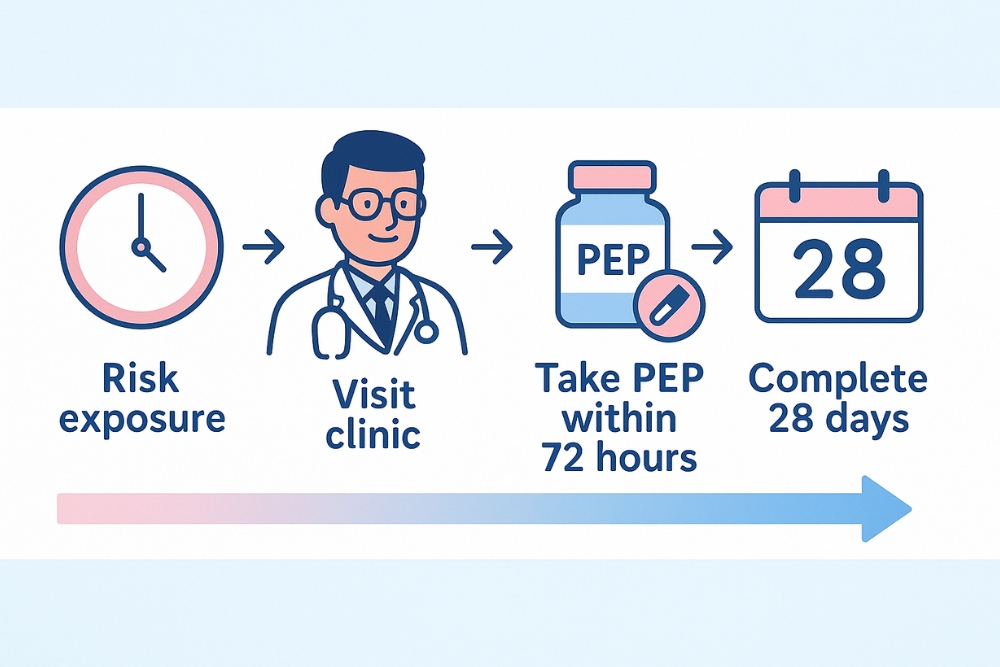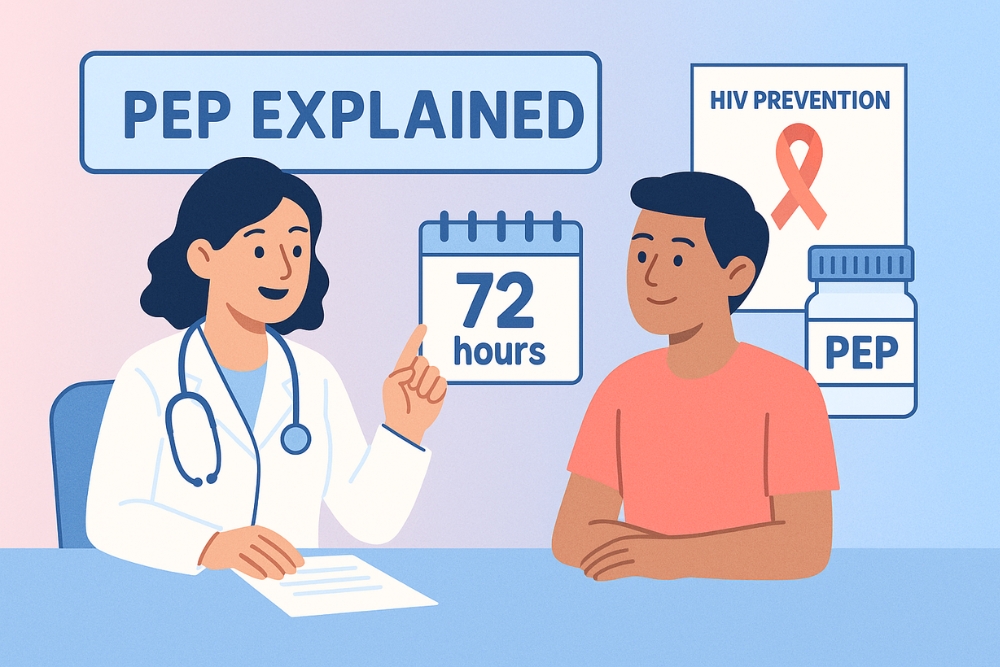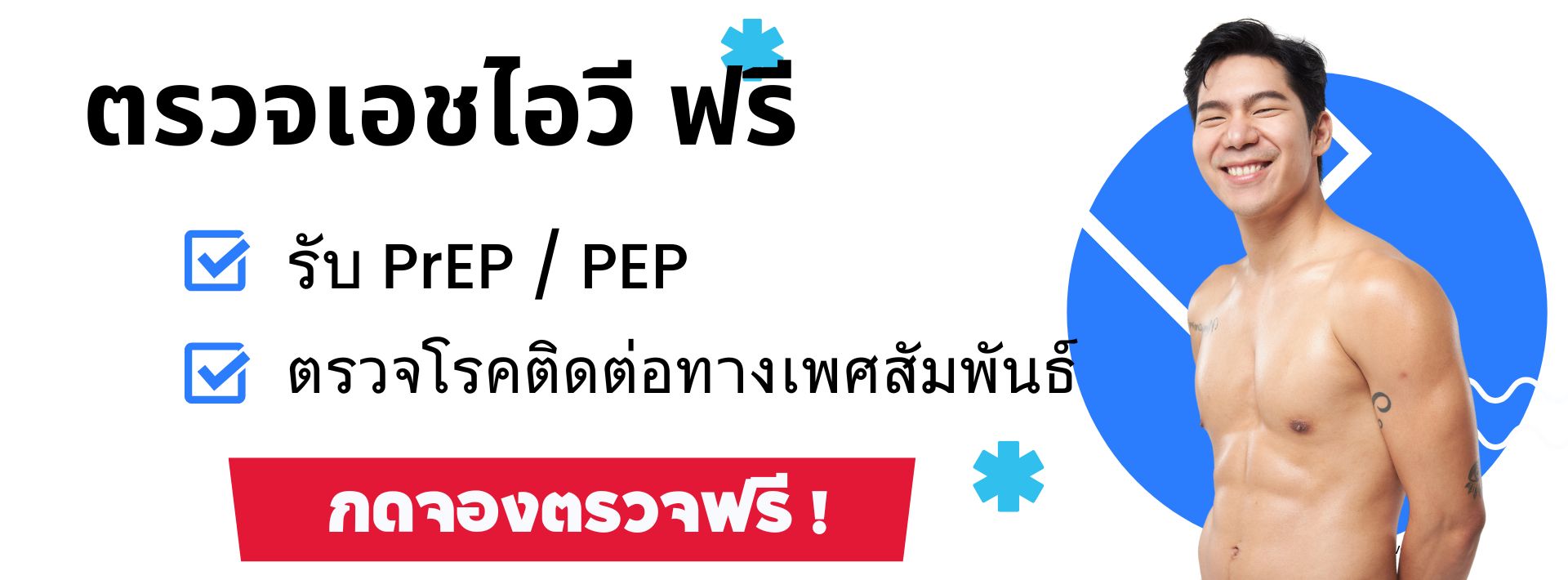PEP ExplainedPEP Explained — it stands for Post-Exposure Prophylaxis, a form of emergency HIV prevention medication. In simple terms, PEP is an antiretroviral treatment used only in urgent cases, such as when someone may have been exposed to HIV unintentionally or through an accident during sex, needle sharing, or other risky contact. Before starting PEP, a person must first get tested to confirm they are HIV-negative, since the medicine is designed for people who have not yet been infected. To be effective, PEP must be taken as soon as possible — ideally within 72 hours after potential exposure — to stop the virus from establishing an infection in the body.
PEP Explained: When should someone consider taking PEP?
PEP is recommended in situations where there’s a real risk of HIV exposure. These include:
- Having unprotected sex or sex without using a condom.
- Experiencing accidents during sex, such as a condom breaking, leaking, or slipping off.
- Being a victim of sexual assault or rape, or having unintentional sexual contact.
- Sharing needles or injection equipment when using drugs.
- Healthcare workers accidentally exposed to HIV, for example through a needle-stick injury, surgical cut, or contact with infected blood.
In any of these cases, it’s important to start PEP as soon as possible — ideally within 72 hours — to reduce the chance of HIV infection. Acting quickly can make a life-changing difference.
Where can you get PEP?
PEP Explained – The medication can only be obtained from hospitals, clinics, or authorized healthcare facilities — it is not available at regular pharmacies or online stores. Because PEP is an emergency antiretroviral treatment, you must first see a doctor or healthcare provider who will assess your level of risk before prescribing the medication. Before starting PEP, an HIV test and other basic blood tests are usually required to ensure that you are HIV-negative and that the treatment is safe for you. After completing the full course of PEP, you should return to the same healthcare facility for a follow-up HIV test to confirm that you remain free from infection.

The Steps to Get PEP
Once you arrive at a hospital or clinic, simply tell the staff that you’ve had a potential HIV exposure and wish to receive PEP, which must be started within 72 hours. The staff will guide you to see a doctor for a risk assessment and consultation. The doctor will ask questions to understand your situation — for example, when the exposure occurred and how it happened — before deciding whether you need PEP. If the doctor determines that PEP is appropriate, you’ll first need to take an HIV test to confirm that you are not already infected. Only if your result is negative will the doctor prescribe the medication.
In addition, PEP Explained – you may be asked to screen for other sexually transmitted infections (STIs) and review your overall health to ensure that you can safely take the medication without adverse side effects. The doctor will then choose the most suitable PEP regimen for you, explain the dosage, and give detailed instructions before dispensing the medication. It’s very important to listen carefully to all the instructions so that you can take PEP correctly and get the most effective protection.
How PEP Works?
PEP contains a combination of 2 to 3 antiretroviral drugs — the same type used in HIV treatment. These drugs work together to prevent the virus from multiplying in your body by blocking its genetic replication process and stopping it from becoming a mature, infectious virus. By doing this, PEP helps your immune system stop HIV from spreading throughout your body. However, timing is crucial: PEP must be started as soon as possible, and no later than 72 hours after exposure. Once started, the medication should be taken continuously for 28 days to ensure maximum effectiveness.
💬 In short: PEP doesn’t kill the virus instantly — it stops it before it has a chance to grow. That’s why consistency and timing matter most.
How to Take PEP Properly?
Taking PEP requires discipline and consistency. You must take your pills at the same time every day for the full 28-day course. Doing so gives your body constant protection and helps the medication work as intended. If you forget a dose, take it as soon as you remember, and then continue with your regular schedule the next day. To help you stay on track, set an alarm, phone reminder, or daily routine linked to a meal or activity you do every day.
While taking PEP, it’s strongly recommended to avoid having sex until the course is finished. If you cannot abstain, always use a condom to reduce the risk of transmission and protect against other STIs.
💡 Remember: Finishing all 28 days of medication is the key to ensuring PEP truly protects you from HIV infection.
What to Do While Taking PEP?
While taking PEP, it’s essential to follow your doctor’s instructions carefully and maintain strict discipline with your medication routine. Take your pills every day at the same time for the full 28-day course, and attend all follow-up appointments as scheduled.
- You can choose any time of day that fits your routine, but consistency is key — take PEP at the same time daily or at the exact hour your doctor advised for your first dose. Keeping equal time intervals between doses ensures that the drug levels in your blood remain stable, preventing the virus from replicating or developing resistance. This steady medication level gives PEP the best chance to stop HIV from taking hold in your body.
- During the treatment period, it’s best to avoid alcohol, smoking, and recreational drugs, as these can weaken your immune system and increase your risk of side effects or complications.
Store your medication properly
- in a cool, dry place away from sunlight, and never leave it in a hot car. Keep it out of reach of children to prevent accidents.
- If you experience any unusual symptoms or discomfort, contact your doctor immediately for advice. Do not take herbal remedies, dietary supplements, or other medications without consulting your healthcare provider first. If you wish to use them, wait until you’ve finished the full PEP course and your doctor confirms it’s safe.
- Avoid staying in crowded or high-risk areas where infections are easily transmitted, as your body may still be adjusting to the medication.
Most importantly, do not take new sexual risks during the 28 days of PEP. If you do have sex, always use a condom to reduce the risk of HIV or other sexually transmitted infections (STIs). Staying mindful and cautious throughout the treatment period is the best way to protect both yourself and your partner.

PEP Explained – Possible Side Effects
Some people may experience mild side effects when starting PEP, such as headache, nausea, vomiting, or diarrhea. These symptoms usually appear during the first few days of treatment and often disappear on their own as your body adjusts to the medication. However, if you experience severe or persistent side effects, consult your doctor immediately for evaluation and possible medication adjustments. Research shows that PEP is over 90% effective in preventing HIV infection when taken correctly and started promptly.
In rare cases, PEP may fail due to:
- Starting treatment later than 72 hours after exposure, or
- Being exposed to a very high viral load, or sometimes a combination of both factors.
How PEP Differs from PrEP?
In simple terms:
PEP is taken after a risk — PrEP is taken before a risk.
PEP (Post-Exposure Prophylaxis) is used in emergencies, such as when a condom breaks or when sex occurs without protection. It must be taken within 72 hours after exposure and continued daily for about 28 days. PrEP (Pre-Exposure Prophylaxis), on the other hand, is a preventive medication taken before exposure. You need to start PrEP in advance and take it consistently every day to build up protection against HIV over time. So, while PEP protects you after an accident, PrEP helps prevent the accident from becoming a problem in the first place.
💬 In short:
Taking PEP properly means committing to 28 days of self-care — taking your pills on time, avoiding risky behaviors, and checking in with your doctor. If you finish your full course and follow all instructions, PEP gives you the best possible protection against HIV infection.
PEP Explained – What’s in the Medication?
Modern PEP regimens typically include a combination of three antiretroviral drugs that work together to block the HIV virus from replicating in the body. The standard combination currently recommended by the World Health Organization (WHO) and used in most clinics consists of:
- Tenofovir disoproxil fumarate (TDF)
- Emtricitabine (FTC)
- Dolutegravir (DTG)
These medications are the same as those used in HIV treatment but are prescribed in this case as a short-term, 28-day preventive course after a possible exposure.
Related Article
- What’s the difference between PrEP and PEP for HIV prevention?
- Youth-Use Activity Learning Rights & Prevention

PEP Explained – Key Things to Know
- PEP is for emergency use only. It is not recommended for routine use after every unprotected sexual encounter. Overuse can lead to unnecessary side effects and, more importantly, drug resistance that may affect future treatment options.
- Timing is critical. PEP must be started within 72 hours (3 days) of potential HIV exposure and continued for 28 consecutive days without missing any doses.
- PEP is only for people who are HIV-negative. You must have a negative HIV test result before starting the medication.
- PEP is highly effective — but not 100%. It significantly reduces the risk of HIV infection, but no medication can provide complete protection. It is designed to lower viral replication and reduce the chance of infection, not to replace other preventive measures.
-
Side effects are generally mild. Some people may experience headache, nausea, or fatigue during the first few days. These usually go away on their own, but if symptoms become severe, see a doctor immediately.
- Don’t skip doses or stop on your own. Missing multiple doses or stopping early can reduce effectiveness. If you forget several doses, contact your doctor for advice right away.
- Follow up after finishing your medication. Once you complete the 28-day course, return for another HIV test to confirm that you remain HIV-negative.
- PEP prevents HIV — but not other STIs. While PEP is powerful against HIV, it does not protect against other sexually transmitted infections such as syphilis, gonorrhea, or chlamydia. Always use condoms for full protection.
Although PEP can greatly reduce the risk of HIV infection, no method is 100% guaranteed. That’s why the most important thing during the 28-day treatment is to avoid any additional exposure to the virus. Always use a condom every time you have sex, even while taking PEP, and never share needles or injection equipment with anyone. It’s also crucial to be mindful of situations that could increase your risk — such as having sex while under the influence of alcohol or drugs, or in moments of poor judgment. In short, PEP works best when combined with responsible behavior and safer sex practices. Protecting yourself is still the most effective way to stay HIV-free.
Reference:
PEP ยาต้านไวรัส HIV หลังการสัมผัสเชื้อ
บริการยาเพร็พและเป็ป
รู้ว่าเสี่ยง! คุณก็ รับเพร็พ เป๊ปฟรี ได้นะ

